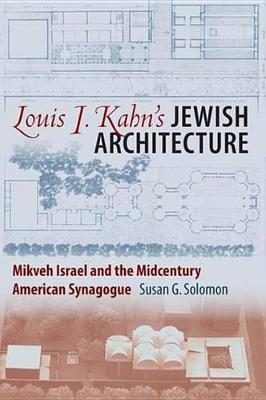Brandeis Series in American Jewish History, Culture, and Lif
1 total work
In 1961, famed architect Louis I. Kahn (1901-1974) received a commission to design a new synagogue. His client was one of the oldest Sephardic Orthodox congregations in the United States: Philadelphia's Mikveh Israel. Due to the loss of financial backing, Kahn's plans were never realized. Nevertheless, the haunting and imaginative schemes for Mikveh Israel remain among Kahn's most revered designs.
Susan G. Solomon uses Kahn's designs for Mikveh Israel as a lens through which to examine the transformation of the American synagogue from 1955 to 1970. She shows how Kahn wrestled with issues that challenged postwar Jewish institutions and evaluates his creative attempts to bridge modernism and Judaism. She argues that Kahn provided a fresh paradigm for synagogues, one that offered innovations in planning, decoration, and the incorporation of light and nature into building design.
Susan G. Solomon uses Kahn's designs for Mikveh Israel as a lens through which to examine the transformation of the American synagogue from 1955 to 1970. She shows how Kahn wrestled with issues that challenged postwar Jewish institutions and evaluates his creative attempts to bridge modernism and Judaism. She argues that Kahn provided a fresh paradigm for synagogues, one that offered innovations in planning, decoration, and the incorporation of light and nature into building design.
